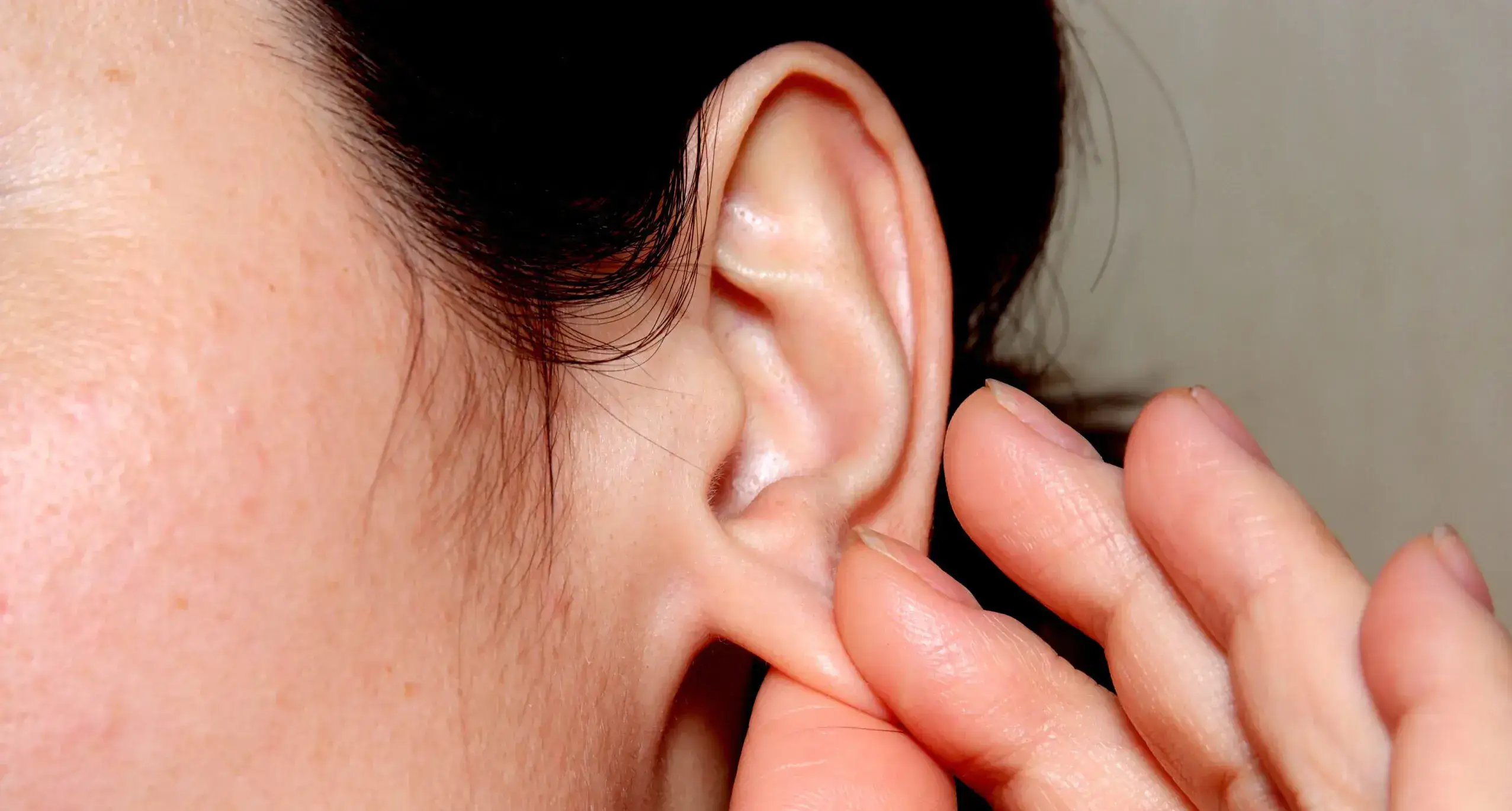Your ears play a bigger role in your confidence and overall health than you might realize. For some, concerns like prominent or misshapen ears can impact self-esteem, while others may face health challenges such as ear infections or hearing issues. Ear surgery, also known as otoplasty, offers solutions for both cosmetic and medical needs. Whether it’s reshaping, resizing, or addressing structural problems, this procedure helps improve balance in facial appearance and resolve certain health concerns. If you’ve been wondering whether ear surgery might be the right step, this guide will help you understand the key signs to look out for.
Common Cosmetic Reasons for Considering Ear Surgery
When it comes to ear surgery, the reasons often go beyond simple aesthetics. Our ears are among the first features people notice, and their size, shape, or positioning can greatly influence overall facial balance. If you’re feeling self-conscious about your ears, understanding these common cosmetic concerns might help you decide if otoplasty is right for you.
Protruding Ears
Protruding ears, often referred to as “sticking out,” can cause embarrassment and self-doubt, especially in childhood or adolescence. For children, this can lead to teasing at school, while adults may feel hesitant to wear certain hairstyles that expose their ears. The good news is that ear surgery can reposition protruding ears closer to the head. This procedure helps create a more balanced look while potentially restoring confidence.

Photo by Vmich
Overly Large Ears (Macrotia)
Some individuals live with macrotia, a condition where ears are noticeably larger than average. This can cause feelings of disproportion and draw more attention than desired. Surgical correction can carefully reduce the ear’s size, creating a more harmonious appearance with the rest of the face. For those seeking balance and subtle changes, addressing macrotia can provide significant psychological relief and satisfaction.
Correcting Asymmetry
Uneven ears—whether in size, shape, or position—are another common reason people seek otoplasty. Asymmetry might be congenital or could result from injury or prior surgeries. A skilled surgeon can adjust and reshape the ears, providing greater symmetry. Many patients report feeling relief as they no longer have to strategically style their hair or avoid certain photos to hide this disproportion.
Unsatisfactory Results from Previous Ear Surgery
Sometimes, previous ear surgeries don’t yield the desired outcomes. Maybe the ears were overcorrected, or the appearance didn’t align with expectations. Revision ear surgeries are available to address these concerns. Surgeons can refine the shape, redo pinning, or correct complications from earlier procedures. While no one likes to undergo multiple surgeries, revision otoplasty can ultimately help achieve a more desired look.
This versatility is what makes cosmetic ear surgery helpful not just for physical adjustments but for a boost in confidence too. Each of these scenarios shows how tailored solutions can address specific concerns and ultimately enhance not just appearance, but peace of mind.
Health-Driven Considerations for Ear Surgery
While ear surgery is often associated with cosmetic improvements, health-related reasons can make it a necessary medical procedure. Chronic infections, congenital deformities, or injuries can severely impact your quality of life. Let’s examine some common health-driven considerations that might indicate the need for ear surgery.
Chronic Ear Infections and Blockages
If you suffer from recurring ear infections, you’re not alone, especially if these infections hinder your hearing or cause discomfort. While antibiotics and other treatments often help manage short-term symptoms, frequent or severe infections can lead to long-term damage. This includes scarring of the eardrum, persistent fluid buildup, or even hearing loss.
In some cases, blockages caused by earwax or debris can exacerbate infections, creating a vicious cycle. Ear surgery, such as a tympanoplasty or myringotomy, can address these issues by repairing the ear’s structure or draining trapped fluid. These procedures not only relieve symptoms but also reduce the likelihood of future infections. By tackling the root cause, surgery can help prevent further complications, leading to a healthier ear long-term.
Structural Issues Affecting Hearing
Hearing loss caused by structural problems in the ear can seem intimidating, but often, it’s treatable. Issues like a perforated eardrum, damage to the tiny bones (ossicles) in the middle ear, or scarring from previous infections can significantly impair your ability to hear.
For example, if the eardrum has been ruptured due to trauma or repeated infections, it may struggle to vibrate effectively, compromising sound transmission. Surgery such as an ossicular chain reconstruction or tympanoplasty can restore these structures, allowing you to hear more clearly. Think of it like fixing a damaged speaker membrane—repairing the delicate moving parts can make a world of difference in sound quality.
Congenital Deformities and Trauma
Certain people are born with ear deformities, such as microtia (underdeveloped ears) or lop ear, where the ear folds or droops abnormally. These congenital issues not only affect physical appearance but can also lead to practical challenges, like difficulty wearing glasses or mild hearing impairments. In other cases, trauma from an accident might result in damaged cartilage or soft tissue, causing a misshapen or non-functional ear.
Reconstructive ear surgery can offer a solution by improving both the ear’s functionality and aesthetic appearance. In children, early intervention can even support better developmental outcomes, as hearing plays a vital role in learning and socialization. For adults, correcting these deformities or repairing trauma injuries can enhance confidence and improve day-to-day functionality.
Addressing these concerns through ear surgery goes beyond aesthetics—it’s about improving health and quality of life. Whether you’re dealing with chronic pain, hearing challenges, or functional issues, the right treatment can provide significant relief.
What To Expect During and After Ear Surgery
Deciding to undergo ear surgery is a big step, whether it’s for health or cosmetic reasons. Understanding the procedure, recovery timeline, and potential risks ensures you’re prepared for what lies ahead. This guide will walk you through everything you need to know about the process, from the operating room to post-recovery care.
The Surgical Procedure
The process for ear surgery, or otoplasty, is typically straightforward but precise. The procedure usually takes one to two hours, depending on the complexity and the type of correction being made.
The surgeon begins by making an incision, most commonly placed behind the ear where it blends well with the natural creases of the skin. This ensures that any scarring remains discreet. In some cases, small incisions at the front of the ear may be necessary but are meticulously hidden within the ear’s folds. Through these incisions, the surgeon reshapes or removes cartilage, repositions the ears closer to the head, or reduces ear size as needed.
Once the desired shape and position are achieved, the surgeon secures the changes using sutures. These stitches are usually permanent, ensuring the ears remain in their new position long after healing. Finally, the area is cleaned, and protective bandaging is applied to support the ears and safeguard them immediately after surgery.
Recovery Timeline and Aftercare
Recovering from ear surgery is a gradual process that varies slightly for everyone, though there are key milestones most patients can expect.
- Immediately After Surgery: You’ll go home with a snug bandage or headwrap around your ears. This helps minimize swelling and protect the delicate tissue as it begins to heal.
- First Week: Discomfort and mild swelling are common, but pain is usually manageable with prescribed medication. By the second or third day, you might swap the bulky bandage for a lighter, easily adjustable one. It’s important to keep your head elevated—even while sleeping—to reduce swelling. Avoid touching your ears or getting the area wet.
- Two Weeks Post-Surgery: Stitches are often removed or dissolve on their own at this point. Many patients feel well enough to return to normal, non-strenuous activities, such as school or desk work, though you’ll still need to wear a light headband at night for additional support.
- One to Three Months: Though most swelling subsides within the first couple of weeks, it can take up to three months for your ears to heal completely and to see the final results. Sports or heavy exercise should be avoided for at least four to six weeks to prevent accidental trauma.
During recovery, following your surgeon’s care instructions is vital. This includes wearing any recommended headbands, avoiding direct sunlight on your ears, and keeping the area clean to prevent infection.
Risks and Complications
Although ear surgery is generally safe, like any surgical procedure, it carries some risks. Being aware of these potential issues helps you stay prepared and proactive in your care.
- Infection: There’s a small risk of infection at the surgical site. Symptoms might include redness, warmth, or drainage. Your surgeon will likely prescribe antibiotics as a precaution, and following hygiene instructions reduces this risk significantly.
- Scarring: While incisions are carefully placed to remain inconspicuous, some scarring is unavoidable. The good news is that these scars tend to fade over time and are often hidden behind the ears.
- Overcorrection or Asymmetry: In rare cases, the ears may appear unnatural or have uneven cartilage shaping. If this happens, a secondary or revision surgery may be required to make adjustments.
- Temporary Numbness: Mild numbness around the ears is common due to nerve involvement during surgery. This usually resolves on its own within a few weeks or months.
- Blood Clots or Excessive Bruising: While rare, some patients may experience bruising or small collections of blood under the skin. These typically resolve with time and care, though more severe cases might need medical intervention.
To minimize complications, choose a qualified, board-certified surgeon with experience in ear surgery. Open communication with your surgeon before and after the procedure ensures any concerns are addressed promptly.
By knowing what to expect during the procedure, taking proactive steps during recovery, and being mindful of the risks, you can approach your ear surgery with confidence and peace of mind.
Factors to Consider Before Opting for Ear Surgery
Deciding to undergo ear surgery is not a choice to take lightly. While the procedure offers solutions to various health and cosmetic concerns, it’s essential to weigh key factors before committing. From your motives to timing and surgeon selection, careful consideration ensures the best possible outcome.
Should You Choose Surgery for Cosmetic or Health Reasons?
Understanding why you are considering ear surgery helps set realistic expectations. Are you pursuing the procedure for a medical concern, such as hearing difficulties or recurring infections? Or are you looking to enhance your appearance by correcting protruding, uneven, or overly large ears?
Cosmetic reasons often stem from emotional factors, like feeling self-conscious about how your ears look. While surgery can boost confidence, it’s essential to ensure you’re doing it for yourself—not due to external pressures or others’ opinions. In contrast, health-driven surgeries address functional challenges, such as chronic ear pain, congenital deformities, or trauma. These issues often require medical attention to prevent further complications.
Ask yourself:
- What changes am I hoping for, and why?
- Am I prepared for the recovery process?
- Have I explored non-surgical alternatives?
By distinguishing between emotional and medical needs, you can better evaluate whether ear surgery aligns with your goals.

Photo by Павел Сорокин
Age and Timing Considerations
Age plays a critical role in determining if and when ear surgery is suitable. For children, surgery is often recommended once the ears are fully developed—around age 5 to 7. At this stage, the procedure can correct issues early, potentially sparing young children from bullying or self-esteem issues as they grow.
For adults, there’s no upper age limit for otoplasty, but overall health is a factor. Adults must meet general surgical health requirements, such as being free from chronic illnesses that could hinder healing. Additionally, older patients may take slightly longer to recover due to natural changes in skin elasticity and healing efficiency.
Timing also matters. If you’re an athlete or someone whose job involves physical exertion, consider scheduling the procedure during a less demanding period. Recovery requires avoiding activities that could risk trauma to the ears for several weeks.
Finding a Qualified Surgeon
Choosing the right surgeon is perhaps the most important factor in ensuring a successful outcome. Ear surgery requires precision and expertise, so finding a professional with the appropriate credentials and experience is non-negotiable.
Here’s a checklist to guide your search:
- Certification: Ensure the surgeon is board-certified in plastic surgery or ENT (ear, nose, and throat) surgery.
- Specialization: Look for someone experienced specifically in otoplasty or the type of ear surgery you need.
- Portfolio: Request before-and-after photos of previous patients to assess their work quality.
- Patient Reviews: Read verified testimonials or ask for references to gauge patient satisfaction.
- Consultation: During your consultation, ask questions about the procedure, risks, and recovery. Trust your instincts—choose someone who listens and makes you feel confident in their care.
Taking the time to select a qualified, trusted surgeon ensures you’re in the best hands. A skilled surgeon not only enhances your results but also minimizes risks and improves your overall experience.
Conclusion
Your ears can affect your appearance, self-confidence, and overall well-being more than you might think. Whether addressing cosmetic concerns or resolving health issues, ear surgery offers tailored solutions that can make a real difference.
Deciding on surgery is a personal decision that requires careful thought and professional guidance. Consider your goals, assess potential benefits, and consult with a board-certified surgeon to explore your options.
If you’re experiencing discomfort, insecurities, or challenges that affect your daily life, ear surgery might be the next step toward feeling better in your own skin. Always prioritize your health and make a choice that feels right for you.







